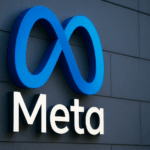Current discourse on artificial intelligence (AI) frequently references emerging trends and technologies reshaping both consumer and industrial landscapes. In recent developments, AI has gained significant attention through its integration into various practical applications, fundamentally transforming traditional processes. These advancements highlight both opportunities and potential vulnerabilities that accompany the technological progress.
In past discussions, the focus has frequently been on AI’s transformative potential and the excitement surrounding its rapid evolution. Yet, concerns about security risks, especially in autonomous systems, have consistently emerged. While AI continues to promise streamlined operations and efficiency, there has always been a parallel discourse about the need for rigorous oversight and improved safety protocols to mitigate potential misuses.
How does the Prompt Economy capitalize on the AI trend?
Recent buzz around the “Prompt Economy” underscores its growing visibility among consumers and professionals alike. Time Magazine’s inclusion of vibe coding in its top inventions list signifies the innovative use of AI by enhancing coding efficiency. Vibe coding, which simplifies code development for tech novices, presents both promising applications and associated challenges. For instance, companies are now counteracting possible errors by hiring engineers to address problems in vibe-coded software.
What vulnerabilities do AI systems present?
Conversely, Nvidia (NASDAQ:NVDA) sheds light on security challenges inherent in AI development tools. The corporation highlights risks posed by automated agents, which, due to their autonomous capabilities, may become susceptible to exploitation. Nvidia emphasizes the importance of prompt injection resistance and suggests comprehensive human oversight to ensure secure operations. Their examination serves as a cautionary tale, stressing that developers need to remain vigilant as AI systems continue evolving.
“An overly privileged agent treating untrusted data as trusted can be turned into a tool working on behalf of the attacker,” stated Nvidia.
Meanwhile, Amazon (NASDAQ:AMZN) Web Services (AWS) introduces the Amazon Quick Suite, an agentic AI platform designed to facilitate workplace automation and streamline complex procedures. This suite is aimed at bridging AI’s consumer convenience with corporate-grade systems. It demonstrates AWS’s initiative to lead in workplace efficiencies through the Prompt Economy.
“What strikes me about these examples isn’t just the time saved—it’s how Quick is fundamentally changing our relationship with work,” remarked Swami Sivasubramanian. “It’s removing the busy work that used to consume valuable time and energy and gives us the time back to focus on what matters.”
This sentiment reflects AWS’s focus on minimizing manual interventions in favor of strategic decision-making.
Additionally, IBM and S&P Global announce their strategic collaboration to deploy AI across enterprise operations, with supply chain management as their initial focus. Their alliance merges IBM’s AI solutions with S&P’s proprietary data to automate processes and improve decision-making capacities. Over time, the extensive integration aims to build infrastructure in procurement, finance, and insurance sectors, essential for navigating intricate global networks.
The integration of AI in various sectors exposes a dual narrative. While companies such as AWS, IBM, and S&P Global capitalize on embedding AI within operational frameworks, challenges persistently surface, particularly regarding security risks. Continuous advancements necessitate careful navigation, combining innovation with robust safety and operational guidelines. As AI proves integral to progress, maintaining a balance between leveraging its capabilities and addressing its potential pitfalls remains crucial.










